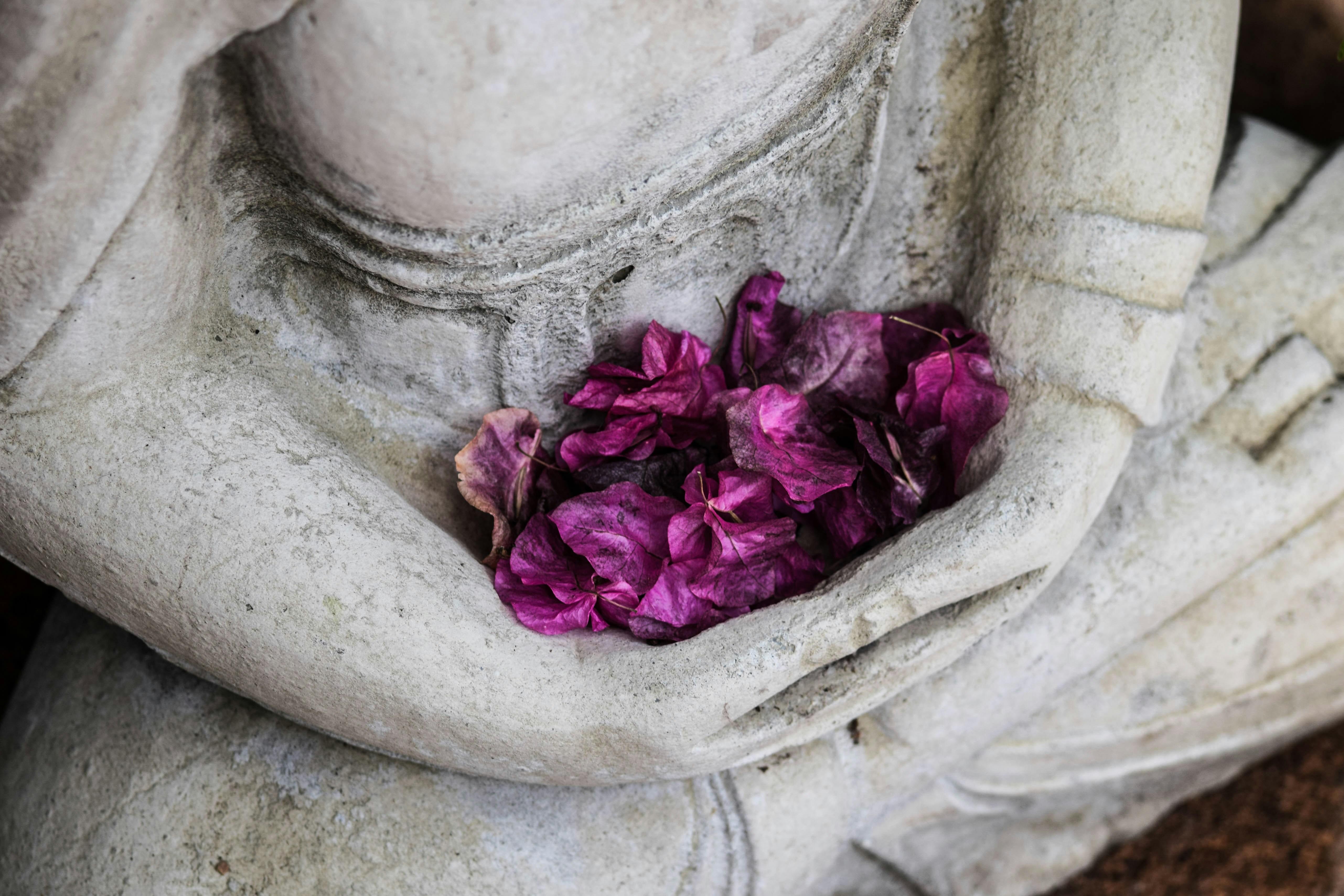In a world that often feels as fast-paced and fragmented as a kaleidoscope, the ancient practice of meditation has found its way into the hearts and minds of people across the globe. Stripped from its cultural moorings and repackaged in countless forms—from smartphone apps to corporate wellness programs—meditation promises tranquility and focus in a chaotic era. Yet, as this age-old practice journeys across continents and cultures, a question emerges: can meditation be fully understood outside the rich tapestry of beliefs, traditions, and philosophies from which it originated? This article delves into the intricate dance between cultural heritage and global adaptation, exploring whether the essence of meditation remains intact or transforms as it crosses cultural boundaries. Join us as we unravel the threads of meditation’s ancient origins and its modern interpretations, seeking to understand whether this practice can truly transcend the cultural context that gave it life.
Exploring the Roots of Meditation in Cultural Context
In delving into the essence of meditation, it becomes evident that its roots are deeply embedded in the cultural and spiritual landscapes of ancient civilizations. This practice is not merely a series of techniques or exercises but a profound expression of cultural identity and spiritual exploration. Understanding meditation requires acknowledging the intricate tapestry of beliefs, philosophies, and historical contexts from which it originated. Many of the principles and practices of meditation are intertwined with the teachings of Hinduism, Buddhism, and Taoism, among other traditions. These spiritual frameworks offer rich narratives and philosophies that shape the meditative experience, imbuing it with meanings and purposes that transcend the act of meditation itself.
To appreciate meditation’s full spectrum, one must consider the cultural elements that accompany it. These include:
- Philosophical Foundations: The underlying philosophies that inform meditation practices, such as the pursuit of enlightenment in Buddhism or the quest for inner peace in Hinduism.
- Ritualistic Practices: The ceremonial aspects that often accompany meditation, from the chanting of mantras to the use of sacred spaces.
- Symbolic Significance: The symbols and metaphors inherent in meditation, which often reflect broader cultural and spiritual narratives.
- Historical Evolution: The way meditation practices have evolved and adapted over centuries, influenced by cultural shifts and exchanges.
These cultural dimensions offer a lens through which meditation can be understood not just as a technique but as a living tradition that continues to evolve while maintaining its connection to its origins.

Bridging the Gap Between Tradition and Modern Practice
In the quest to comprehend meditation outside its cultural birthplace, a delicate balance must be struck between respecting traditional roots and embracing modern interpretations. Meditation, with its deep-seated history, offers a rich tapestry of practices that have evolved over centuries, primarily in Eastern cultures. To truly understand it, one must consider the nuanced philosophies and spiritual frameworks that have shaped its essence. Yet, as meditation finds its place in contemporary wellness practices, it often undergoes transformation, adapting to the needs and perceptions of a global audience.
- Cultural Context: The original context of meditation encompasses not only techniques but also spiritual and philosophical underpinnings that may be lost when isolated from their roots.
- Modern Adaptations: In today’s fast-paced world, meditation is often repurposed as a tool for stress relief and mental clarity, sometimes stripped of its deeper spiritual significance.
- Integration and Respect: The challenge lies in integrating these practices with respect and understanding, ensuring that the core values and teachings are not diluted.
By acknowledging and appreciating the origins of meditation, while also embracing its evolving forms, practitioners can create a more holistic understanding that bridges ancient wisdom with modern needs. This approach not only honors the tradition but also enriches the practice, offering a comprehensive pathway to personal growth and well-being.

Understanding Meditation Through a Cross-Cultural Lens
When exploring the practice of meditation, it’s essential to acknowledge its deep roots in various cultural traditions. Originating primarily from Eastern philosophies, such as Hinduism, Buddhism, and Taoism, meditation serves as a bridge to transcendental experiences and spiritual enlightenment. But can this profound practice be entirely grasped when removed from its cultural context?
- Cultural Significance: Many meditation techniques are intertwined with religious and philosophical beliefs, offering a path to spiritual awakening that is deeply embedded in cultural rituals.
- Modern Adaptations: In Western cultures, meditation often emphasizes stress reduction and mindfulness, diverging from its original spiritual intentions.
- Universal Principles: Despite cultural differences, certain principles of meditation—such as mindfulness, focus, and inner peace—remain universal and accessible to anyone.
invites us to appreciate its diverse interpretations and practices while questioning whether these interpretations retain the essence of their origins. By embracing both the historical and contemporary facets of meditation, we can cultivate a practice that respects its roots while adapting to modern needs.

Integrating Ancient Wisdom with Contemporary Perspectives
In the tapestry of human history, meditation is a thread woven with rich cultural significance. Originating from ancient Eastern traditions, particularly within Hinduism and Buddhism, it has been a practice deeply intertwined with spiritual, philosophical, and cultural contexts. As meditation journeys into the heart of Western society, it raises a poignant question: Can it be fully grasped outside its cultural cradle? To explore this, one must consider how contemporary perspectives can both enrich and dilute its essence.
- Adaptation vs. Preservation: Modern interpretations often strip meditation of its spiritual layers, focusing instead on its psychological and physiological benefits. While this approach makes it accessible to a wider audience, there’s a risk of losing the profound depth that comes from its original cultural teachings.
- Globalization and Fusion: The blending of ancient wisdom with contemporary science and psychology can lead to innovative practices that resonate with today’s fast-paced world. This fusion, however, should be approached with respect for the roots of meditation, ensuring that the practice remains grounded in its foundational philosophies.
As we integrate these ancient practices into our modern lives, a balanced approach is crucial. By honoring the origins of meditation while embracing new interpretations, we can cultivate a practice that is both authentic and relevant.
The Way Forward
As we draw our exploration to a close, the question of whether meditation can be fully understood outside its origin culture remains both intriguing and complex. While the practice has transcended geographical and cultural boundaries, becoming a global phenomenon embraced by many, its roots are deeply embedded in ancient traditions that have shaped its essence. The interplay between preserving the authenticity of meditation’s origins and adapting it to fit diverse modern contexts presents both challenges and opportunities.
Ultimately, the understanding of meditation may not hinge solely on cultural proximity but on the openness and intention with which individuals approach it. By honoring its origins while fostering a respectful curiosity, we can enrich our personal journeys and perhaps glimpse a deeper, shared human experience. In this global tapestry, meditation serves as a thread that connects, heals, and enlightens, inviting us all to ponder its mysteries and marvel at its timeless wisdom.
As we step away from this discourse, let us carry with us a renewed appreciation for meditation’s multifaceted nature, acknowledging both the cultural heritage that nurtured it and the universal human quest for peace and understanding that continues to sustain it.
